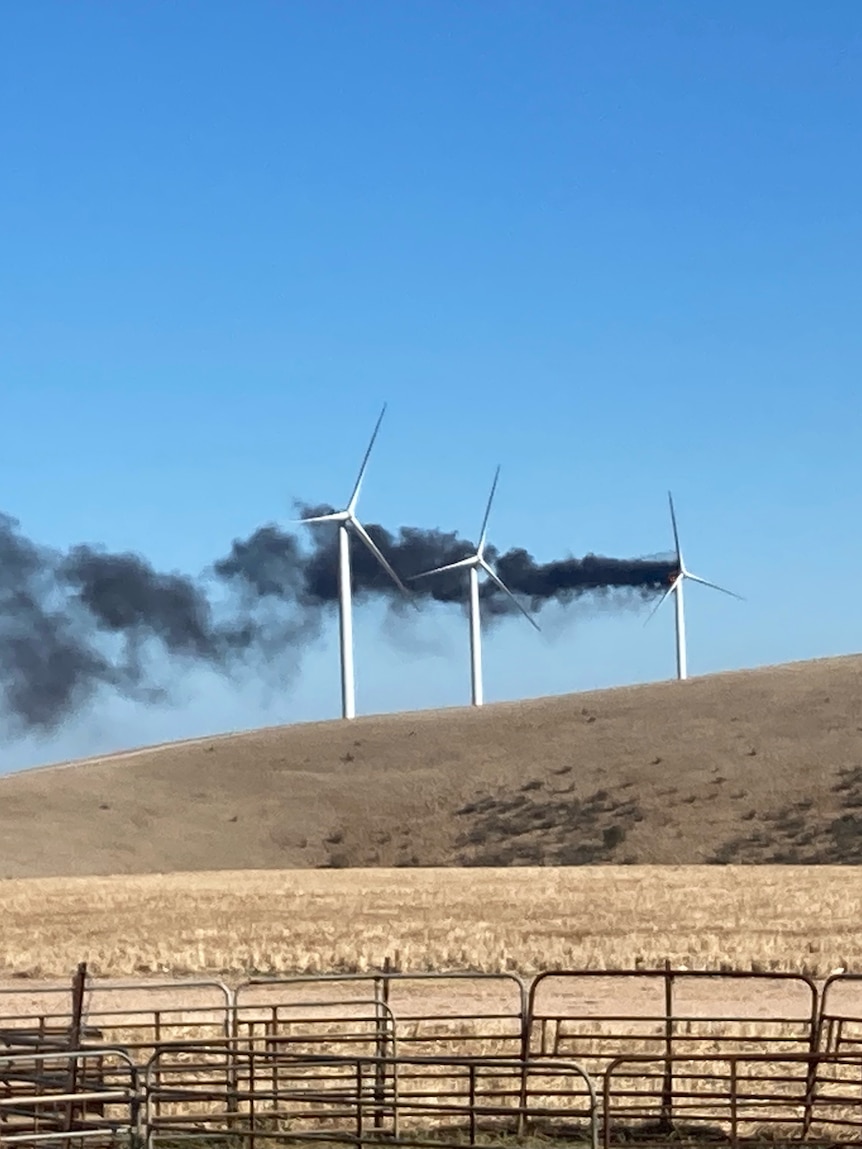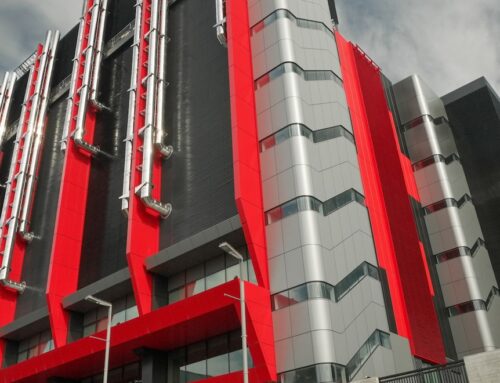A fire in a wind turbine that sent smoke billowing over Mid North South Australia has sparked worries that such a blaze could result in a bushfire on a hotter and windier day.
The fire destroyed a wind turbine at the Clements Gap Wind Farm and caused a grass fire on the ground that burnt about 30 hectares of farmland.
It started early in the morning on a cooler than average day for February with light winds.
“Conditions were definitely in our favour today,” Andrew Stewart, from the South Australian Country Fire Service, said on the day of the fire.
“Early this morning, temperatures were fairly mild, we had fairly high humidity and fairly low winds, which meant the grass fire wouldn’t spread too far.”
So how much danger would there be on a high fire danger day?
And what is the risk of fires starting in wind turbines?
Turbine fire risk
There are 22 wind farms in South Australia, according to the state’s Department for Energy and Mining.
The largest is the Snowtown Wind Farm, in the Mid North, which has 137 turbines.
The most recent wind turbine fire before the Clements Gap one was at the Cathedral Rocks Wind Farm near Port Lincoln in January last year.
There was also another fire at the same site in 2009.
Wind turbines have also been destroyed in fires at the Starfish Hill Wind Farm on the Fleurieu Peninsula in 2010 and at the Lake Bonney Wind Farm in the state’s south-east in 2006.
Country Fire Service (CFS) media liaison officer Rachel Guy said wind turbine fires were rare.
“In the case one does occur, CFS and wind farm operators generally have comprehensive emergency response plans and training in place,” she said.
Clean Energy Council chief policy and impact officer, Arron Wood, said malfunctions could and did happen.
“The clean energy industry views safety as its highest priority, and proactively acts to minimise the risk of these occurring,” Mr Wood said.
The Australasian Fire and Emergency Service Authorities Council’s Wind Farms and Bushfire Operations document says “wind farms are not expected to adversely affect fire behaviour, nor create major ignitions risks”.
It says wind farms may actually reduce the risk of bushfires starting from lightning since the lightning would hit the turbines rather than the ground because they are tall, metal structures.
Putting out the flames
Fire crews cannot put out turbine fires themselves because they are too high above the ground.
Instead, they wait for the fire to burn itself out.
Eudunda resident Mary Morris, who is against a wind farm proposed near her home, said it could take hours for the fires to burn out.
“All they can do is wait a few hundred metres from them down the bottom and try and put out whatever fire rains down onto the ground — and that can go quite a distance,” she said.
Ms Guy said the Country Fire Service burned around the edges of last week’s fire so it had no fuel to spread.
“Fire crews do not undertake offensive firefighting in wind turbines,” Ms Guy said.
“Firefighters work on the ground to stay on top of spot fires caused by falling debris.
“Firefighters are well practised in grassfire suppression and can quickly contain any fires which do occur.”
Creating power on fire danger days
Ms Morris, who attended a protest against renewable energy projects in Canberra last week, said she was concerned about how quickly a fire could spread if the fire danger rating was higher than it was for last week’s fire.
“If that happened on a severe fire day or catastrophic fire day, and also in the type of vegetation that you can’t put out, if that thing’s just raining down spot fires for hours and hours and they’re just blowing all over the area, that’s going to be a catastrophe,” she said.
Wind turbines are allowed to continue to spin on fire danger days in South Australia.
“Operating a wind turbine is not deemed a high-risk activity during elevated fire danger,” Ms Guy said.
Other fire risks
The Australasian Fire and Emergency Service Authorities Council document says transmission infrastructure, meteorological towers and guy-ropes can be difficult to see for aerial firefighting crews.
It mentions the example of a fire in 2017 at the Waterloo Wind Farm in South Australia’s Mid North, which burnt 50 hectares of grassland near the turbines.
The wind turbines were locked in the “Y” position during the fire by the operator to make them safer to fly around.
In a report by the Clean Energy Council on the same fire, it said communication between the wind farm operator and firefighting services was of utmost importance.
“The experience confirmed the value of community engagement and relationships around the site,” it said.
“It has also confirmed that ongoing, regular engagement with local volunteer organisations and service providers is key to keeping response plans in check and ensuring the needs — and safety — of the community are cared for at all times.”
A spokesman for Pacific Blue, which owns the Clements Gap Wind Farm, said the company “meets regularly with our project partners and local community organisations – including emergency service providers — to identify and mitigate operational risks and potential impacts resulting from our activities”.
Get our local newsletter, delivered free each Friday





